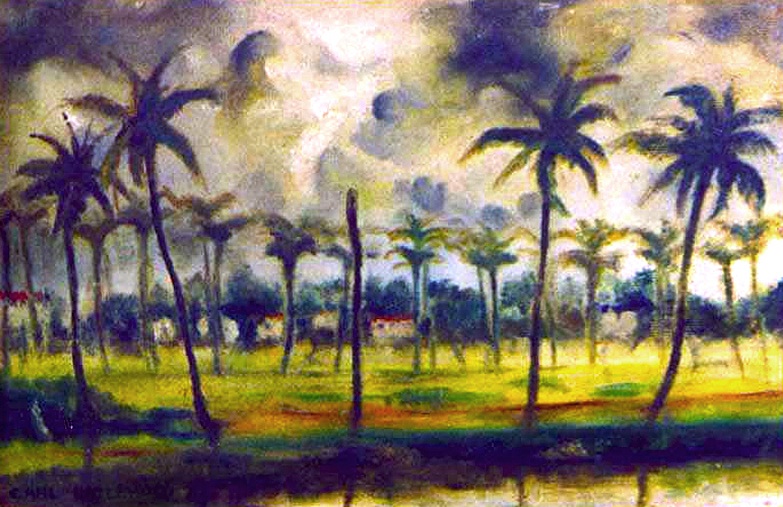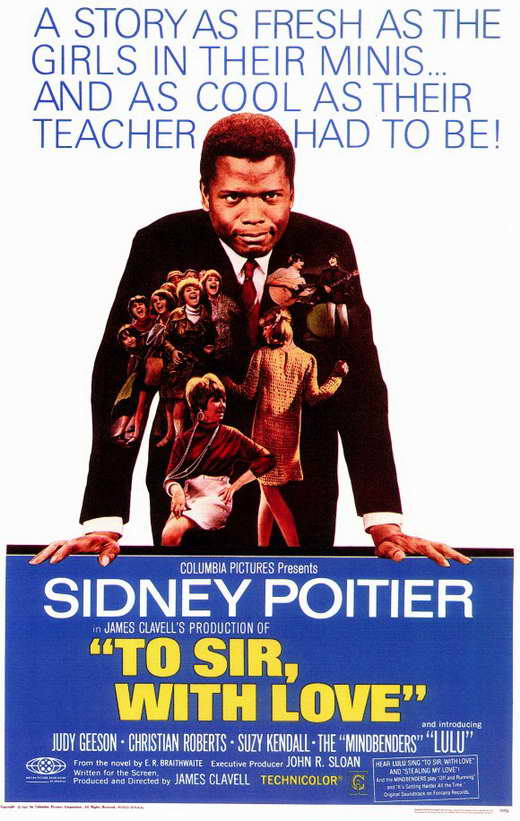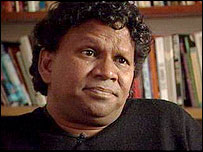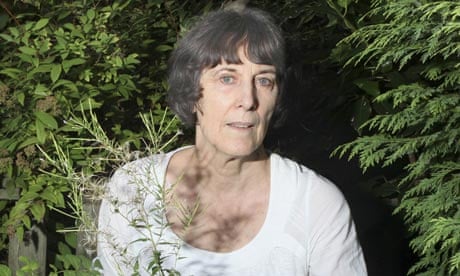Guyanese art has a strong influence from Amerindian
traditions. Their diverse population is also integrated into the visual arts
field here. After Guyana gained independence, many artists chose to
study abroad, either in Britain, the United States, or other places. And after
these artists graduated, it was pretty common for them to come back to Guyana. As
they studied in Europe and North America, it opened their eyes to different artistic styles.
They no longer had to paint in the styles of the colonial days. Artists were now free to stretch the
boundaries of what they could paint, and often looked to their national
identity for inspiration.
 |
| by Carl E Hazelwood |
In looking at what many of the popular Guyanese
artists were known for, many were attracted to and excelled in abstract
expressionism. This style of art emerged during the late 1940s after WWII in
New York and had significant followings in the US, Germany, and other areas in
Europe. Jackson Pollock was probably one of the most well-known US artists of
this genre. The style is characterized by all-over designs and often look like someone just
splattered paint all over the canvas. So, many of these Guyanese artists took
what was popular and combined it with symbols and objects that were notable in
the art of the indigenous peoples to create something that was truly their own.
With the use of geometric shapes and the contrast between bright colors and
pastels, Guyanese art can be quite visually appealing.
 |
| by Aubrey Williams |
Some of the most famous artists from Guyana include
Stanley Greaves (painter and writer), Donald Locke (known for his drawings,
paintings, and wood sculptures), Frank Bowling (known for his abstract
paintings; was born on Leap Day), Hew Locke (sculptor; eldest son of Donald
Locke), George Simon (Lokono Arawak artist and archaeologist), and Aubrey
Williams (known for his large paintings that combine abstract expressionism
with pre-Columbian themes).
The vast majority of literature from Guyana is
written in English. It includes literature from authors who currently live in or
lived most of their life in Guyana and authors who emigrated to other countries.
It wouldn’t be until the 1940s until author Edgar
Mittelholzer would emerge, bringing to the forefront topics surrounding the
relationship between the European Guyanese and the non-European Guyanese.
 |
| Notice the movie was directed by James Clavell, who wrote the novel Shogun, which I read years ago. |
The 1950s-1970s brought forth the first wave of
famous authors and poets: E.R. Brathwaite (author, most famous for his
autobiographical novel To Sir, With Love, which was later made into a
movie starring Sidney Poitier), Wilson Harris (poet, novelist, essayist;
characterized by his abstract and metaphorical writing), Jan Carew (novelist,
playwright, poet, educator), Roy Heath (novelist), Martin Carter (considered
Guyana’s greatest poet by many), Walter Rodney (intellectual and historian),
and Michael Gilkes (dramatist, filmmaker, educator).
 |
| Dr David Dabydeen |
(By the way, I think David Dabydeen looks an awful
lot like A.R. Rahman, the Indian composer and producer. What do you think?)
 |
| A.R. Rahman |
The 1980s and 1990s introduced a new generation of
Guyanese writers: Beryl Gilroy (novelist, educator), John Agard (playwright,
poet, children’s lit), Grace Nichols (poet), Jan Shinebourne (novelist), Dennis
Adonis (novelist, biographer, journalist, textbook author, children’s lit),
Cyril Dabydeen (editor, poet, novelist, short stories), Sasenarine Persaud
(poet, short stories, novelist, essayist), and David Dabydeen (writer, critic,
educator, Guyana’s ambassador to China).
 |
| Pauline Melville, her father was from Guyana |
Several authors have made their way to the top in recent years, such as Pauline Melville (novelist and actress), Oonya Kempadoo (novelist; her father, Peter Kempadoo, was also a writer and broadcaster), and Sharon Maas (novelist).
Up next: music and dance
No comments:
Post a Comment